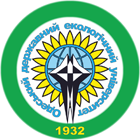Analisis of mathematical models of structure of precipitation and reflection of radiowaves therefrom
Authors: Vel'myskyn D.Y., Pustovit T.M., Diachenco E.A., Buchynskaya I.V.
Year: 2016
Issue: 20
Pages: 142-149
Abstract
The article deals with the issues of safety of aviation flights under special meteorological conditions which include flights within the areas associated with thunderstorm activity, heavy rainfall, increased electrical activity of the atmosphere etc. This raises the task of providing aviation flights with maximum accurate and timely information from radar means of meteorological information. In order to solve this task we require the most appropriate mathematical models and structures of out-of-order models of radiowaves reflectivity.
The article deals with mathematical models of main characteristics of precipitation (shape, size, orientation). These characteristics, in their turn, determine main characteristics of reflected hydrometeors of radar signals. Backscattering of radar signals is determined by the effective surface of scattering. It shows that it is subject to Rayleigh approximation. Accuracy of approximation depends on size of particles and dielectric constant. Doppler and polarization measurements of particles moving relative to a meteorological radar set and causing a Doppler shift signal are studied. Doppler spectrums describe it through statistical aspects such as average backscattered power, average speed and dispersion. Polarimetric measurements are characterized by several parameters: horizontal reflectivity, differential reflectivity. The article theoretically justifies the use of polarization Doppler parameters of reflected radiowaves in order to perform a subtle analysis of microstructure of meteorological particles.
Tags: recognition; spectral analyzes statistical evidences; textures
Bibliography
- Pavlov N.F. Aerologiya, radiometeorologiya i tekhnika bezopasnosti [Aerology, radiometeorograph and safety]. Leningrad: Gidrometeoizdat, 1980. 432 p.
- Kachurin L.G. Metody meteorologicheskikh izmereniy [Modeling of the process of melting of precipitation with radar surveillance systems ATC]. Leningrad: GMI, 1985. 368 p.
- Gorelik A.G., Mel’nichuk Yu.V. DAN SSSR –Reports of the USSR Academy of Sciences, 1961, vol. 140, pp. 579-582. [In Russian]
- Sokol P.P. Nauchnyy vestnyk MGTU GA – Scientific Bulletin of Moscow state technical University of civil aviation, 2010, no. 152, pp. 187-191. [In Russian]
- Gorelik A.G., Mel’nichuk Yu.V., Chernikov A.A. Trudy TsAO – Proceedings Of The Central Aerological Observatory , 1963, no. 48, pp. 29-36. [In Russian]
- Gorelik A.G., Sterlyadkin V.V. Izv. AN SSSR – News Academy of Sciences of the USSR, 1990, no. 1. pp. 47-54.
- Enterprise Electronics Corporation, USA, Weather radar solutions for today and tomorrow. A tech.-sys. company. Prospects, 1999.
- Joe P., Crozier C., Scott J., Falla M., Passarelli R.Jr., Siggia A. Signal processing and digital IF on the Canadian Doppler radar network. – COST 75, 1999, p. 544-556
- Terminal Doppler weather radar (TDWR). A briefing paper. Federal Aviation Administration USA, Boulder, 1988, p. 18.
- Pampel H. Obnaruzhenie isverhkratkosrochnoe prognozirovanie konvektivnyih yavleniya, opasnyih dlya aviatsii [Discovery and supershort-term prognostication конвективных the phenomena, dangerous for an aviation]. Leningrad: Gidrometeoizdat, 1998, no. 4, pp. 70-83.
- Bezlova T.A. Meteorologicheskie avtomatizirovannyie radiolokatsionnyie seti [Meteorological automated radiolocation networks] Sankt-Peterburg: Gidrometeoizdat, 2002. pp. 332.



